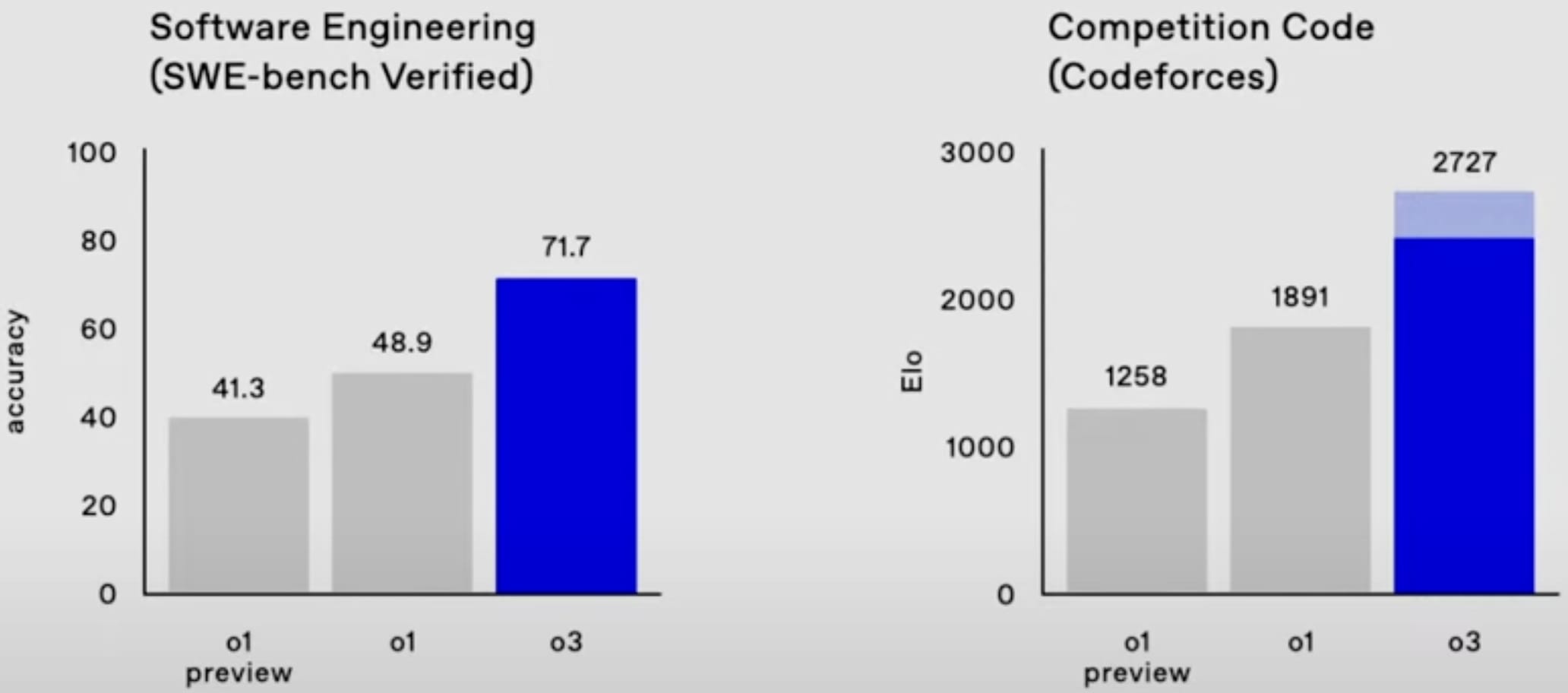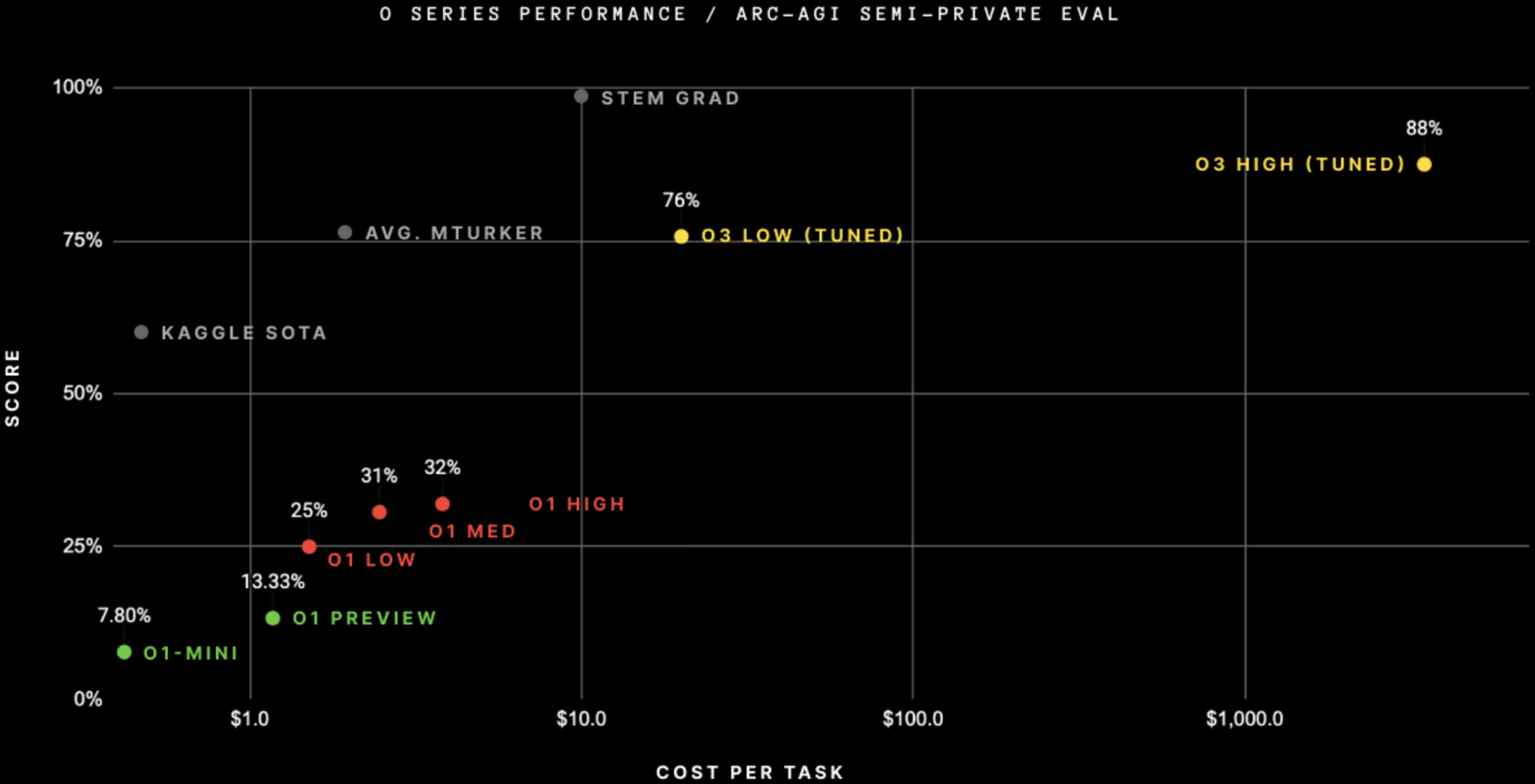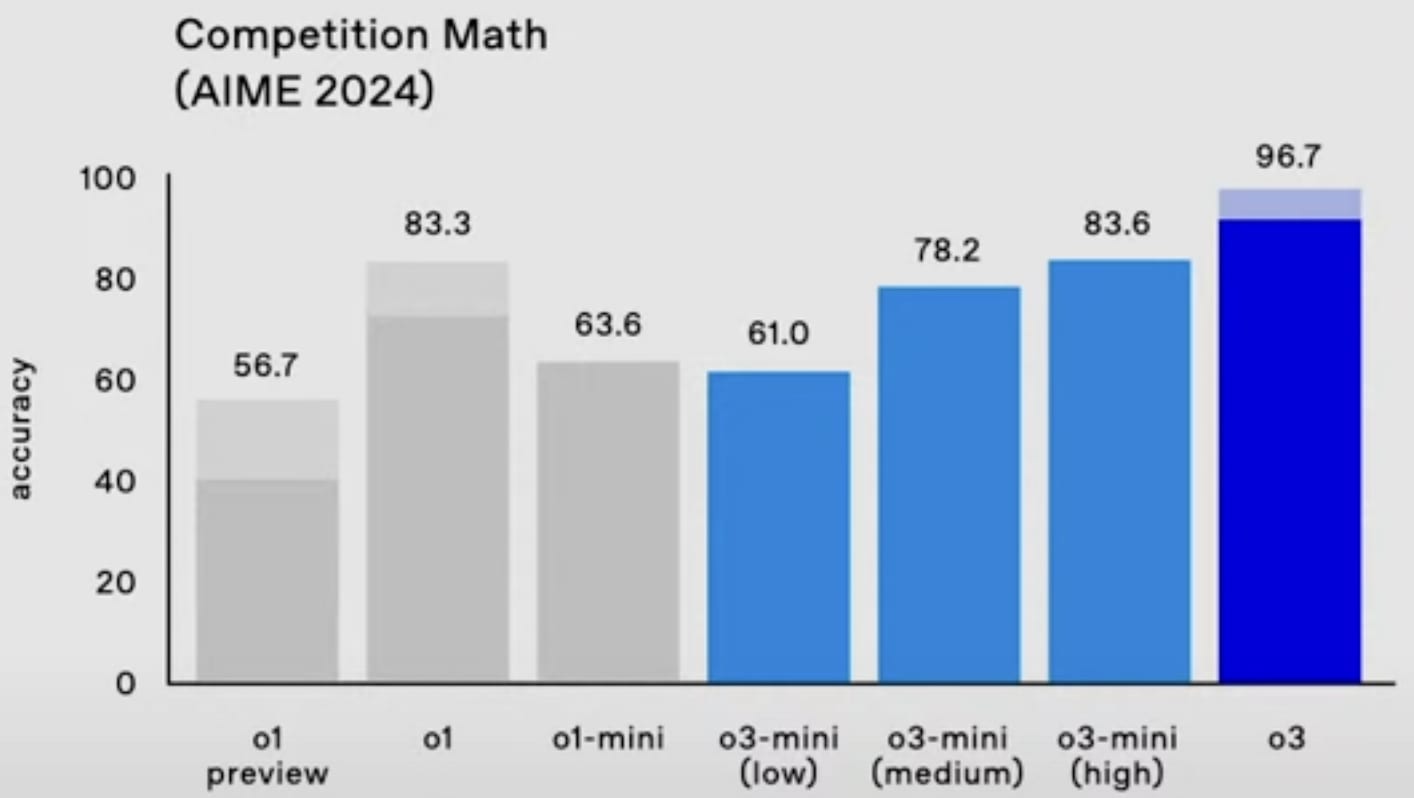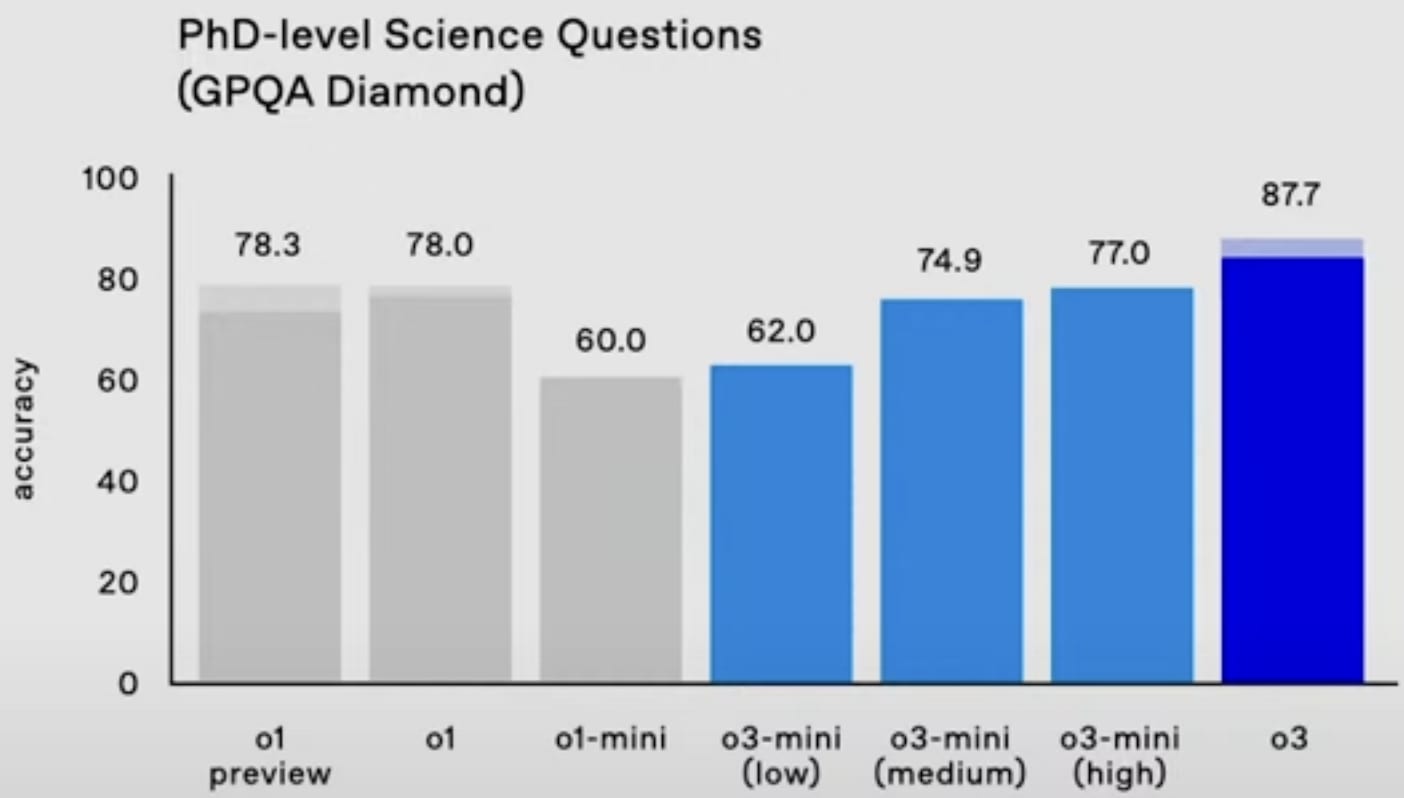See livestream, site, OpenAI thread, Nat McAleese thread.
OpenAI announced (but isn't yet releasing) o3 and o3-mini (skipping o2 because of telecom company O2's trademark). "We plan to deploy these models early next year." "o3 is powered by further scaling up RL beyond o1"; I don't know whether it's a new base model.
o3 gets 25% on FrontierMath, smashing the previous SoTA. (These are really hard math problems.[1]) Wow. (The dark blue bar, about 7%, is presumably one-attempt and most comparable to the old SoTA; unfortunately OpenAI didn't say what the light blue bar is, but I think it doesn't really matter and the 25% is for real.[2])

o3 also is easily SoTA on SWE-bench Verified and Codeforces.

It's also easily SoTA on ARC-AGI, after doing RL on the public ARC-AGI problems[3] + when spending $4,000 per task on inference (!).[4] (And at less inference cost.)

ARC Prize says:
At OpenAI's direction, we tested at two levels of compute with variable sample sizes: 6 (high-efficiency) and 1024 (low-efficiency, 172x compute).
OpenAI has a "new alignment strategy." (Just about the "modern LLMs still comply with malicious prompts, overrefuse benign queries, and fall victim to jailbreak attacks" problem.) It looks like RLAIF/Constitutional AI. See Lawrence Chan's thread.[5]
OpenAI says "We're offering safety and security researchers early access to our next frontier models"; yay.
o3-mini will be able to use a low, medium, or high amount of inference compute, depending on the task and the user's preferences. o3-mini (medium) outperforms o1 (at least on Codeforces and the 2024 AIME) with less inference cost.


GPQA Diamond:

- ^
Update: most of them are not as hard as I thought:
There are 3 tiers of difficulty within FrontierMath: 25% T1 = IMO/undergrad style problems, 50% T2 = grad/qualifying exam style [problems], 25% T3 = early researcher problems.
- ^
My guess is it's consensus@128 or something (i.e. write 128 answers and submit the most common one). Even if it's pass@n (i.e. submit n tries) rather than consensus@n, that's likely reasonable because I heard FrontierMath is designed to have easier-to-verify numerical-ish answers.
Update: it's not pass@n.
- ^
Correction: no RL! See comment.
Correction to correction: nevermind, I'm confused.
- ^
It's not clear how they can leverage so much inference compute; they must be doing more than consensus@n. See Vladimir_Nesov's comment.
- ^
Update: see also disagreement from one of the authors.
Just trying to follow along… here’s where I’m at with a bear case that we haven’t seen evidence that o3 is an immediate harbinger of real transformative AGI:
(I really haven’t been paying close attention and I’m open to correction.)
Thanks for the reply! Still trying to learn how to disagree properly so let me know if I cross into being nasty at all:
I'm sure they've gotten better, o1 probably improved more from its heavier use of intermediate logic, compute/runtime and such, but that said, at least up till 4o it looks like there has been improvements in the model itself, they've been getting better
They can do incredibly stuff in well documented processes but don't survive well off the trodden path. They seem to string things together pretty well so I don't know if I would say there's ... (read more)